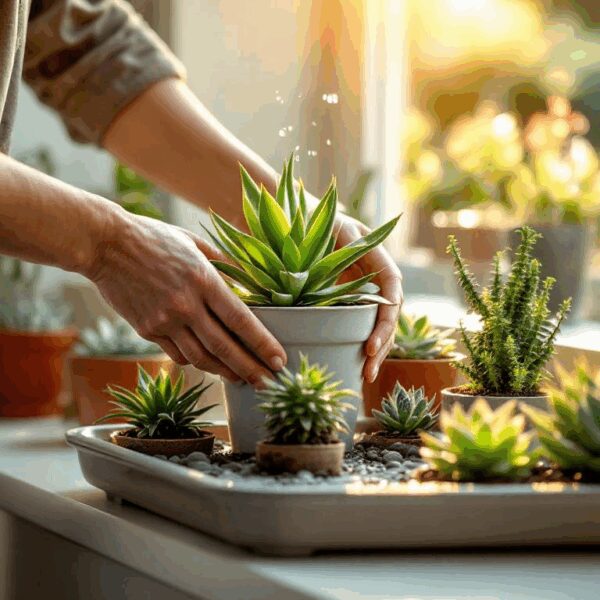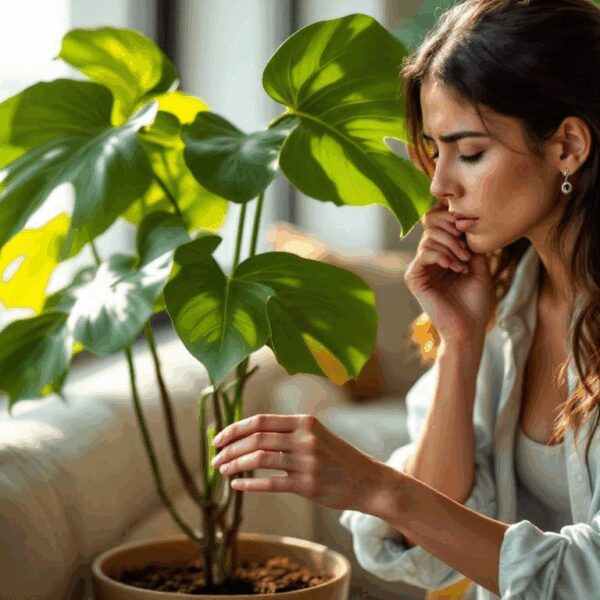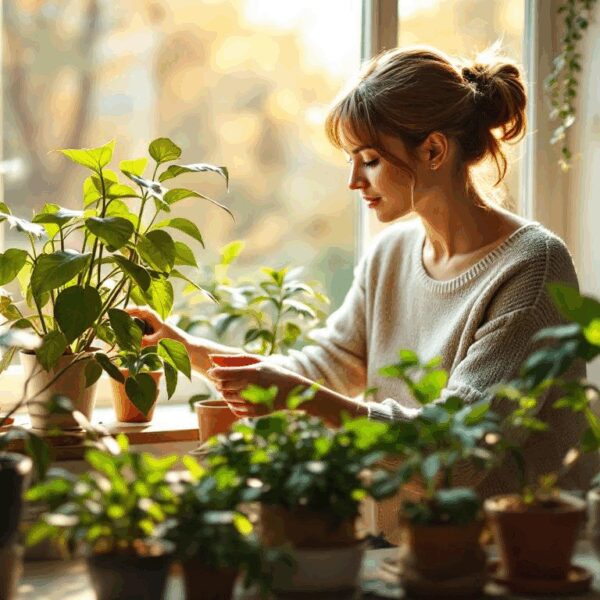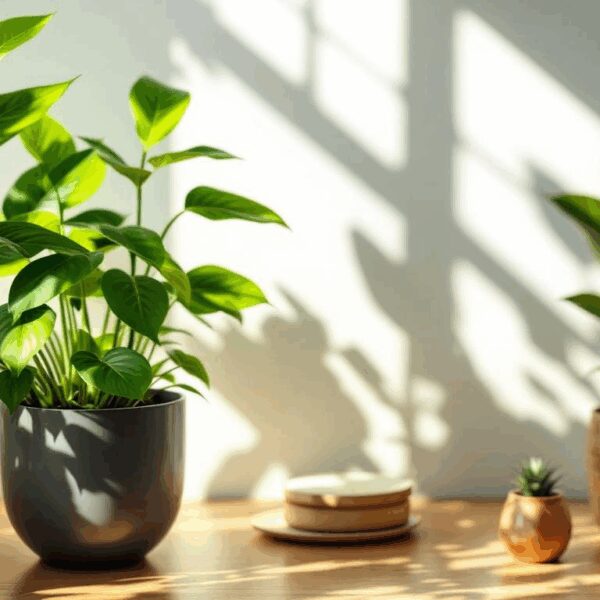So, you’ve got a thriving collection of houseplants, yet they keep giving you that sad, droopy vibe? It’s a real bummer, isn’t it? But here’s the kicker: often, it’s not the lack of love or light that’s causing the problem—it’s overwatering. Trust me, it can sneak up on you faster than you think!
🌱 Green Thumb Essentials in 4 Points:
- Poor Drainage is a Sneaky Villain: If your houseplants are looking sad, check those pots! 🪴 No holes? Time to repot! Terracotta is your best friend for airflow.
- Quality Potting Mix Matters: Invest in a good mix with perlite or bark. It’s like giving your plants a cozy bed to snooze in! 🌿 Brands like Miracle-Gro have great options.
- Know Your Watering Needs: Not all plants drink the same! 💧 Your Pothos likes it dry, while calatheas prefer a bit more moisture. Stick your finger in the soil to check before you water!
- Light Levels Make a Difference: Pay attention to where your plants hang out. 🌞 Some love bright spots, while others are cool with low light. Adjust their spots as seasons change to keep them thriving!
Why Your Houseplants Keep Dying (It’s Not What You Think)
So, you’ve got a collection of beautiful houseplants, but somehow they keep meeting their untimely demise. It’s frustrating, right? You water them, give them light, and talk to them like they’re your best buddies. Yet, week after week, you find yourself staring at sad little leaves or brown stems. The truth is, the #1 reason your houseplants are struggling might not be what you think. Spoiler alert: it’s not just overwatering or underwatering.
The Silent Killer: Poor Drainage
This might sound a bit shocking, but one of the biggest culprits is actually poor drainage. It’s easy to overlook this crucial aspect when you’re busy nurturing your green friends. Many houseplant owners underestimate how vital it is for excess water to escape from the pot. If water sits at the bottom of the pot, it creates a swampy environment that can lead to root rot, especially in sensitive plants like peace lilies or snake plants.
Check if your pots have drainage holes. If they don’t, you might want to consider repotting into something that does. Terracotta pots are a great choice because they allow for airflow and help soak up excess moisture. You can grab some affordable options at Home Depot or Lowe’s!
The Secret to Keeping ZZ Plants Happy in Dark Corners of Your Home
A Quick Fix: Use Quality Potting Mix
And while we’re on the topic of drainage, using a high-quality potting mix can make all the difference. Look for blends that contain perlite or bark—these materials improve aeration and drainage. Brands like Miracle-Gro offer mixes designed specifically for houseplants that can help keep your plants happy.
Signs Your Plants Are in Trouble
If you spot yellowing leaves or mushy roots poking out of the drainage holes, pay attention! These signs often indicate that your plant is sitting in too much water. On the flip side, if your plant is drooping and leaves are crispy around the edges, it could be thirsty—but let’s first rule out root rot.
How to Rescue Overwatered Plants
If you think you’ve overwatered, gently remove your plant from its pot and inspect those roots. Healthy roots should be white and firm, while rotting roots will appear brown and mushy. Trim away any dead sections with clean scissors before repotting it in fresh soil.
The Right Watering Schedule Matters
But let’s not forget about watering schedules! Too many plant parents have a “one size fits all” approach when it comes to watering their indoor jungle. Each type of plant has unique needs depending on its species and even its current environment.
The Goldilocks Zone: Finding Just Right
Your Pothos, for instance, loves to dry out between waterings; aim for every 1-2 weeks depending on humidity levels in your home. Meanwhile, tropical plants like calatheas enjoy consistently moist soil but still need good drainage! As a rule of thumb, stick your finger an inch deep into the soil; if it feels dry at that depth, go ahead and water.
Lack of Light: The Other Sneaky Factor
Your Low-Light Friends vs Sun-Lovers
ZZ plants or spider plants can tolerate lower light conditions while others such as sansevieria thrive with bright indirect sunlight. Assess where each plant sits in your home; if they’re stretching towards the light or getting leggy, it may be time to rethink their location.
Seasonal Adjustments Are Key
A Seasonal Checklist
- Reduce watering frequency—most indoor plants won’t need as much moisture.
- Consider moving them closer to windows that get more sunlight during these darker months.
Tweak your care routine according to seasonal changes and watch how quickly your plants bounce back!







